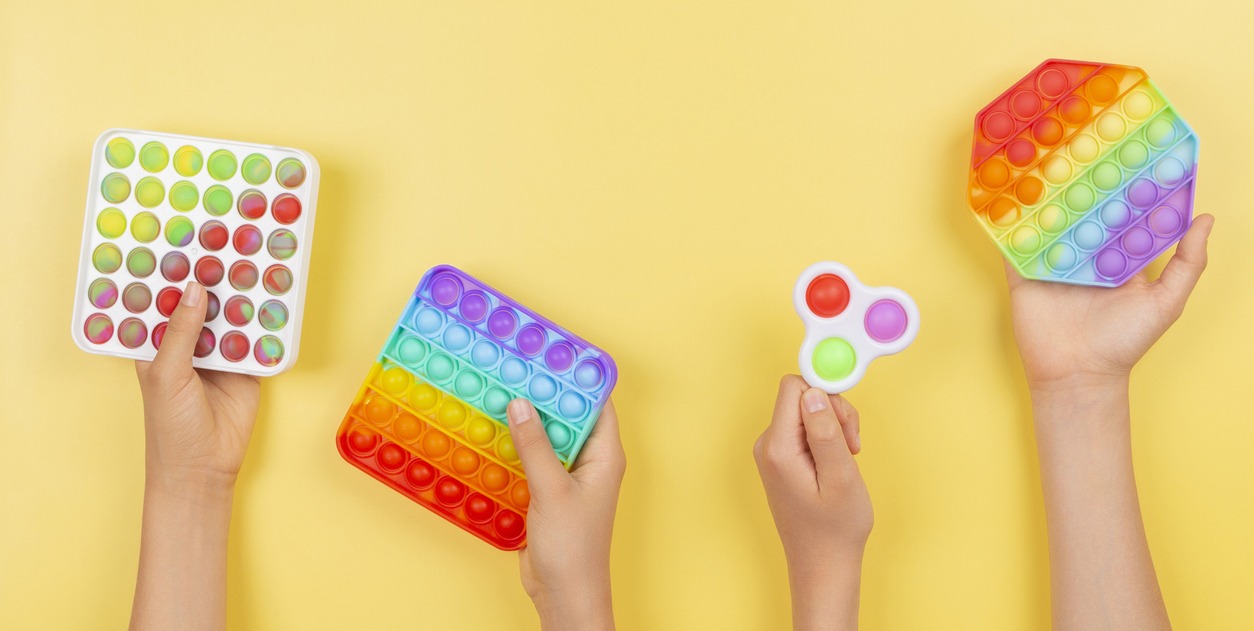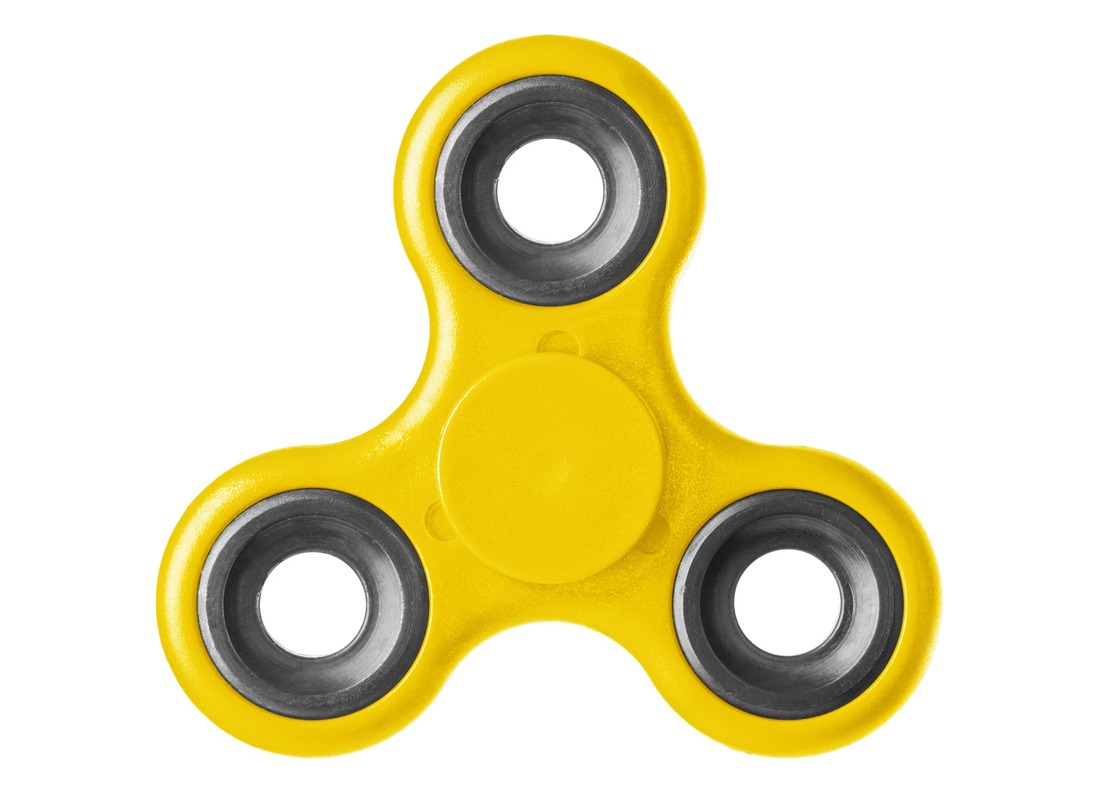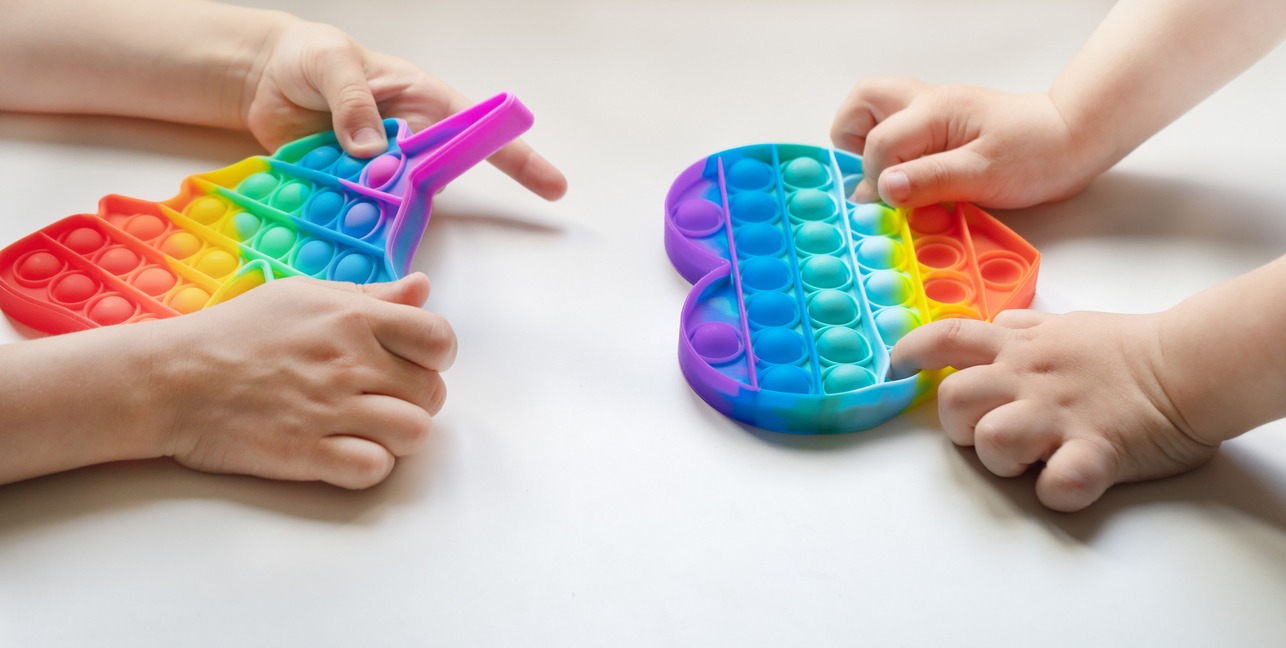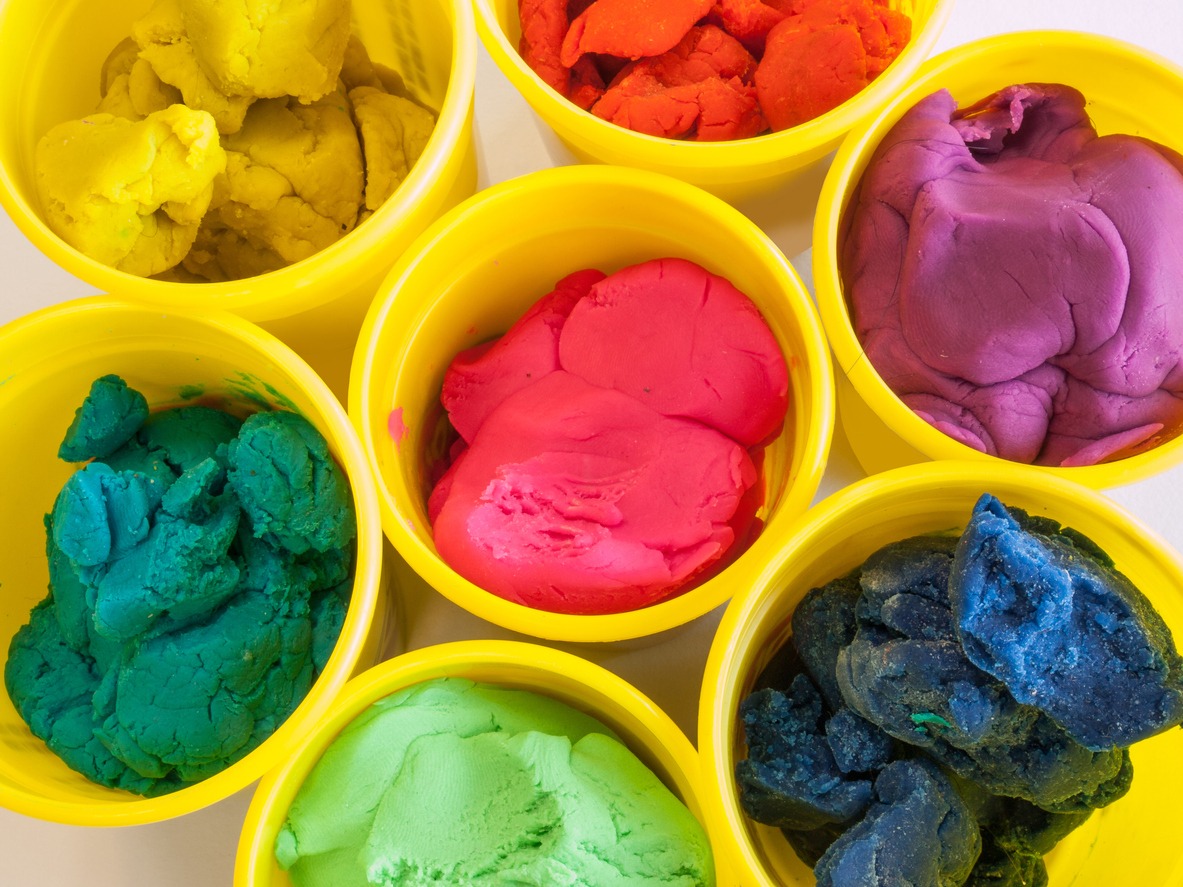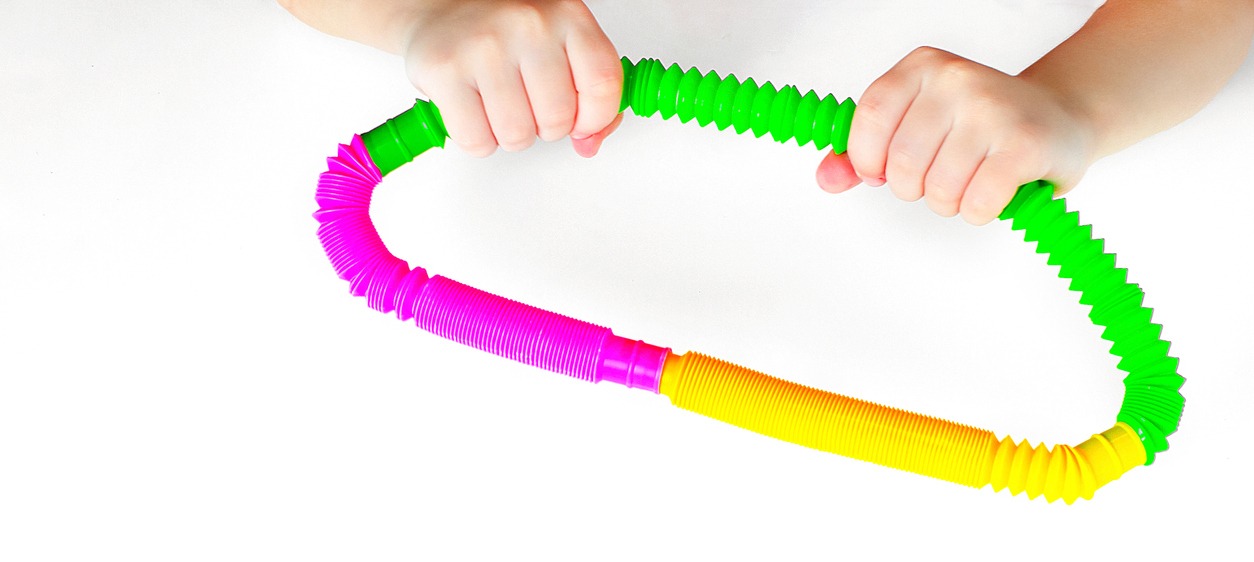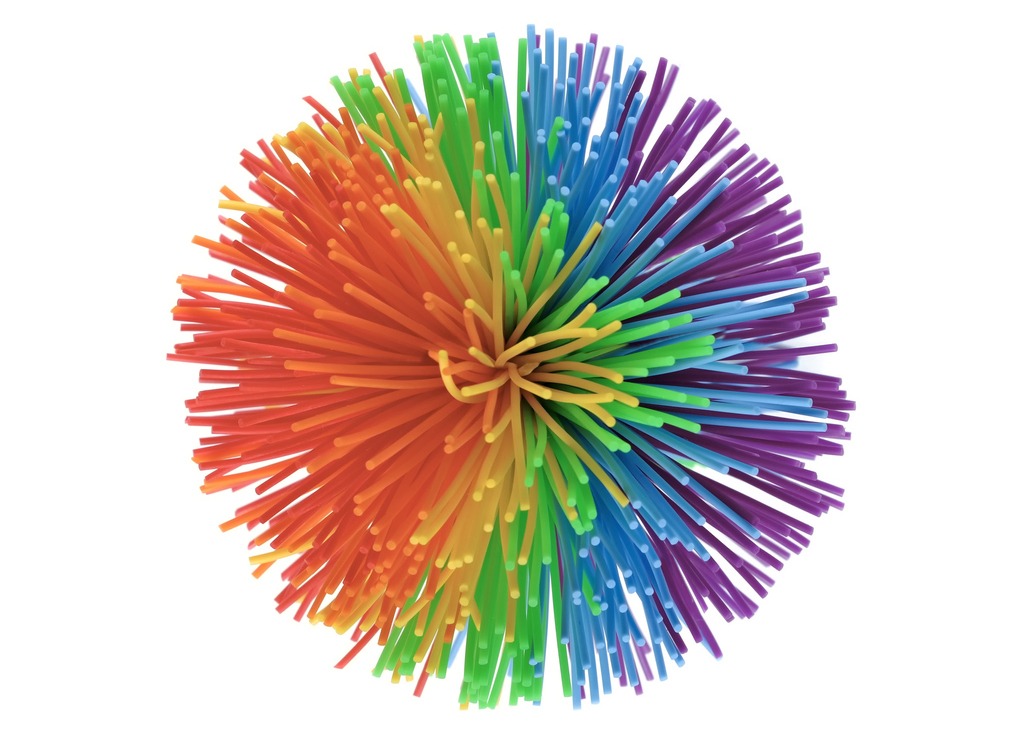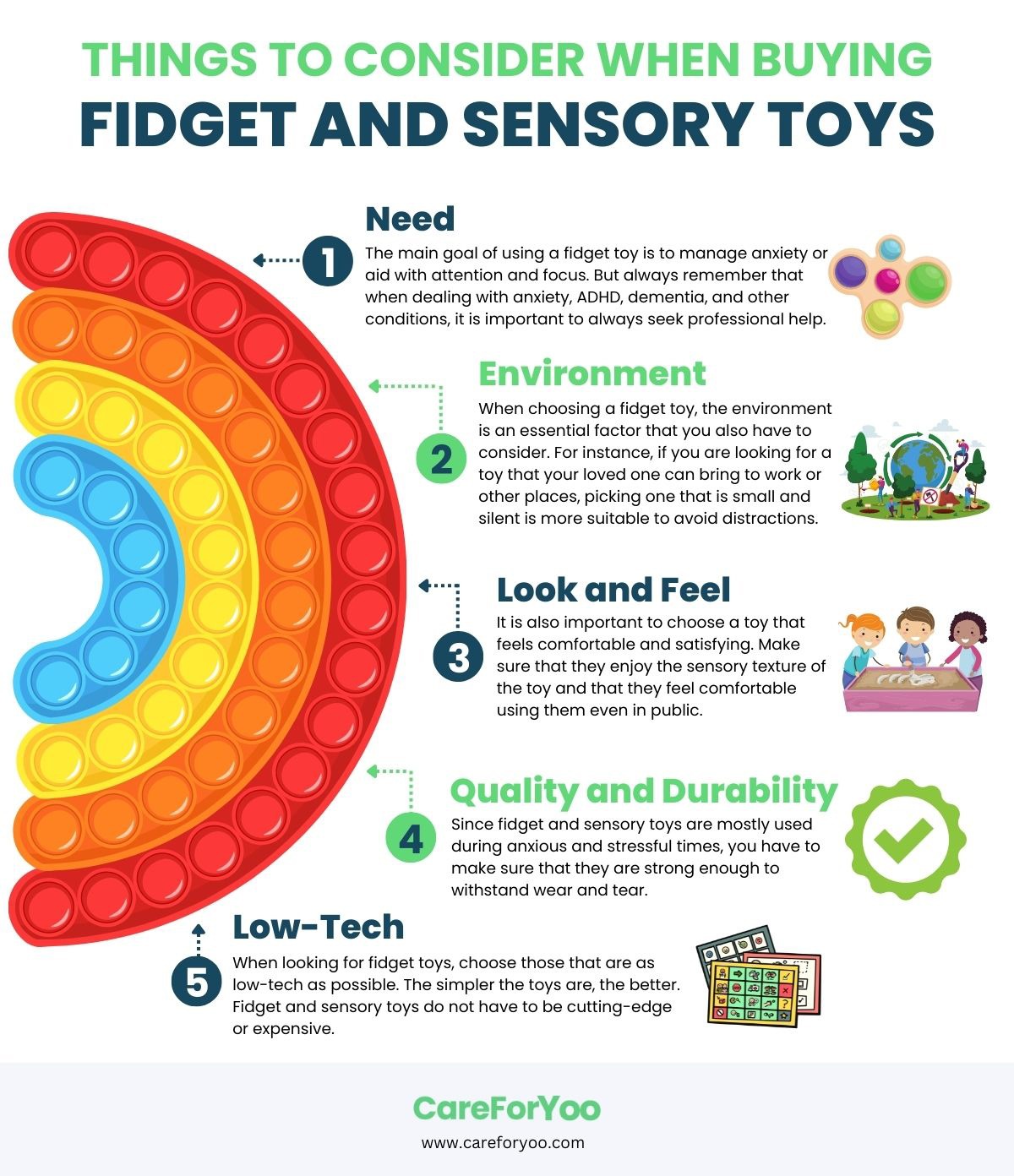No parent on the planet has not heard about fidget spinners. Though these ubiquitous toys became a trend a few years ago, they are still the most popular fidget toy out there. When fidget spinners hit the market in 2017, they quickly rose in popularity.
But fidget spinners and other fidget toys aren’t recent inventions. Similar devices had been invented as early as 1933, as the toy was promoted for helping people who have trouble focusing or those who fidget to relieve stress, anxiety, and nervous energy.
If you’re an anxious mom or if you have a restless child, fidget toys can help. Learn about their advantages and how each toy has its own benefits.
Benefits of Fidget Toys
Fidget toys can be beneficial for anyone who fidgets, and everybody tends to do so. You probably fidget multiple times a day, whether it’s touching the hair, biting the nails, playing with zippers or buttons on your clothing, or tapping or clicking pens. This is why fidget spinners and toys have been a huge hit among children and adults. Here’s how fidget toys can benefit you:
Improves focus and concentration
Research about sensation seeking tells us that people seek to adjust their environments and experiences to provide just the right level of stimulation. People tend to function well under different circumstances – some like it totally quiet for them to focus, while some need a busy environment in the background. Some people may find it helpful to use a fidget item to get into the right frame of mind and stay focused and calm. The repetitive motion you can do while using a fidget toy can provide a sensory input that helps to stimulate the brain and increase alertness.
Reducing stress and anxiety
Fidgeting can help to reduce feelings of anxiety and stress. When a person is nervous and stressed out, they tend to do repetitive, small movements using their hands and feet. Fidgeting can be done by a person in moments of anxiety, but it’s also often done in anticipation of moments of discomfort. A fidget toy can be a channel for reducing stress and anxious feelings. The physical act of squeezing or manipulating a fidget toy can provide a sense of comfort and relaxation.
Boosting productivity
For some people, fidgeting can actually improve productivity. Common types of fidgeting like foot tapping, hair twirling, or nail biting may be counterproductive. Still, many experts believe that if these fidgeting behaviors are redirected, it can actually increase productivity and enhance learning. When the hands are busy with a fidget toy, the mind is free to focus on a task, leading to increased productivity and efficiency.
Improves fine motor skills
Some fidget toys can help the user develop or improve fine motor skills and hand-eye coordination. The intricate hand and finger movements needed while playing with the toy – like twisting, pinching, squeezing, etc. – can help improve finger strength, grip, and dexterity for both children and adults. It can help build the muscles in the fingers and hands, making it easier for anyone to perform fine motor tasks in general.
It may help children with ADHD or autism to focus on a task
Fidget toys can be helpful for people with conditions such as ADHD or autism, as they can provide a calming influence and reduce sensory overload. A study involving children with ADHD found that when they are allowed to fidget (like wriggling, bouncing, or moving gently in place), they are more likely to perform a cognitively demanding task. This means that letting them fidget can help them focus more on studying or reading for long periods, which can be a struggle for children with these conditions.
Different Fidget Toys and their Benefits and Potential Disadvantages
There are many different fidget toys you can use. All of them are portable, making them a convenient option for individuals who need a sensory tool while on the go.
Fidget spinners
Arguably the most popular fidget toy, fidget spinners dominated the toy market a few years ago. These are handheld toys with a central bearing with three or more arms that can be spun around. To use a fidget spinner, a user must hold the central bearing with thumb and finger, then use the other fingers of the same or the other hand to rotate the spinner. They were originally marketed as a tool to help reduce stress and improve focus, particularly for individuals with ADHD, anxiety, or other conditions that can make it difficult to sit still or concentrate.
Pros:
- Reduces stress and anxiety – The repetitive motion of spinning a fidget spinner can be calming and help to reduce feelings of stress and anxiety.
- Improves focus – For some people, fidget spinners can help to improve focus and concentration by providing a small amount of sensory stimulation.
- Provides a sensory experience – Fidget spinners can provide a tactile and visual experience that can be satisfying and engaging for individuals who enjoy sensory stimulation.
- Promotes relaxation – Similar to other fidget toys, fidget spinners can help individuals to relax and unwind, providing a momentary break from stressful or overwhelming situations.
Cons:
- Can be distracting – Once a user gets “hooked” to it as they try to balance it with the thumb, they may attempt to try lots of tricks with it, making them all the more distracted from the task they need to do in the first place. It’s why many schools banned the use of fidget spinners in the classrooms because it tends to take away the focus from the teacher.
- Not a cure-all solution – You shouldn’t depend on a fidget spinner to “fix” the attention and stress problems related to ADHD, autism, and anxiety.
Fidget cubes
Fidget cubes, as the name implies, are small, handheld cube-shaped toys designed to help people cope with stress, anxiety, and other sensory issues. They were popular in 2017, along with fidget spinners. They usually have multiple sides, each featuring different tactile stimuli, such as buttons, switches, dials, and balls, that can be clicked, twisted, flipped, and rotated.
Pros:
- Relieves stress and anxiety – Fidgeting can help reduce stress and anxiety by providing a physical outlet for nervous energy and helping to regulate breathing and heart rate.
- Improves focus and attention – Some studies suggest that fidgeting can enhance cognitive performance by increasing alertness and attention, especially in individuals with ADHD.
- Provides sensory stimulation – Fidget cubes can provide a variety of tactile sensations that can help individuals with sensory processing disorders, such as autism and Asperger’s syndrome, to manage sensory overload.
- Promotes relaxation – The repetitive and soothing motions of fidgeting can promote relaxation and calmness, helping to reduce muscle tension and improve sleep.
Cons:
- Can be distracting – As with fidget spinners, fidget cubes might be distracting instead of helping the individual focus on a certain task.
- Can be noisy – Some fidget cubes may produce noise, which can be distracting to others.
- Small parts – Cheaply made children can break fidget cubes, and their small parts may pose a choking risk.
Pop-it Toys
Pop-it toys are the latest, ubiquitous sensation among fidget toys. This small, handheld sensory toy made of silicone features a series of bubbles that can be popped back and forth. They come in a variety of shapes, colors, and sizes and are often marketed as stress-relief toys. There are also children’s bags made of these pop-it bubbles, making it a fashion statement among children as well.
Pros:
- Provides stress and anxiety relief – Pop-it toys offer a physical outlet for nervous energy to help reduce stress and anxiety
- Improves focus and attention – The simple, repetitive activity of popping the bubbles can help the user stay engaged and focused, improving their focus and attention.
- Provides sensory stimulation – The tactile sensation of popping the bubbles can provide satisfaction to the senses, which can help individuals with sensory processing disorders.
Cons:
- None – Since it’s soft, portable, quiet, and isn’t made of different parts, there are not many risks and downsides associated with this toy.
Putty
Putty, also known as play dough or modeling clay, can also be used as a fidget toy. This toy comes in different colors and can be molded, squished, stretched, and rolled. For hands that always wanted to be busy, putty can provide a soothing and satisfying tactile experience.
Pros:
- Relieves stress and promotes relaxation – Playing with putty gives the body a physical outlet for nervous energy and helps to regulate breathing and heart rate. The repetitive motion of squishing and molding the putty or play-dough can be calming and relaxing, helping to reduce muscle tension and promote a sense of calm.
- Helps develop fine motor skills – Manipulating the putty or play-dough requires fine motor skills, which can help improve hand strength, dexterity, and coordination.
- Provides sensory stimulation – People with trouble with sensory processing can benefit from the soft sensation that manipulating the putty can provide.
- Promotes creativity and imagination – Most art classes for children require the use of putty at least once because it encourages imagination and creativity. Putty can be molded into anything, and using different colors can make the artwork look similar to the real thing.
Cons:
- May need a flat surface – Unlike the fidget toys mentioned above, it’s more satisfactory to play putty on a flat surface like a table, so you can shape it and form something out of it better.
- Can be messy – Some children may leave bits of putty on the tables or floors, so you have to be more mindful so you may not step on it or accidentally place something on top of it, as it tends to stick. Same thing with bags – you don’t want to deal with raw putty just mixed in with the other contents of a child’s bag. You must instruct children to put putty away in a plastic, solid container.
Stress balls
Before fidget spinners were everywhere, stress balls were the king of fidget toys. It’s a squeezable ball typically made of foam or rubber, and when squeezed, it provides a tactile sensation that helps relieve stress.
Pros:
- Stress-relieving – The name says it all. If you’re stressed, feeling angry, or nervous, you can squeeze the ball hard to help you release that negative energy and tension. It can provide a physical outlet for emotions, allowing individuals to release pent-up feelings of frustration or anger.
- Improves hand strength and dexterity – Repeatedly squeezing the stress ball exercises your hand muscles, improving their strength and dexterity. It can help those who have problems with their grip and fine motor skills.
- Improves focus and concentration – For some individuals, using a stress ball can help to improve focus and concentration by providing a small amount of sensory stimulation.
Cons:
- It can be used to hurt people or destroy things – Once the stress ball is thrown hard at someone, it can hurt. When thrown toward something, it may cause damage. Sometimes, you may need to train first the user – whether it’s a child or an elderly with cognitive problems – not to throw the ball.
Tangle toys
A type of sensory toy, tangle toys consist of a series of interconnected plastic segments that can be twisted, turned, and manipulated in various ways. They are often marketed as fidget toys and can be used to help manage stress, anxiety, and other sensory issues.
Pros:
- Promotes stress relief – Nervous, pent-up energy can be directed to tangle toys, which helps the user reduce stress and regulate breathing and heart rate.
- Develops fine motor skills – Manipulating the tangle toy requires fine motor skills, which can help improve hand strength, dexterity, and coordination.
- Improves focus and attention – Using a tangle toy can help improve focus and attention by providing a simple, repetitive activity to help individuals stay engaged and focused.
- Promotes relaxation – The repetitive motion of twisting and manipulating the tangle toy can be calming and relaxing, helping to reduce muscle tension and promote a sense of calm.
Cons:
- Can be distracting – A user may be hooked on tangling the toy a certain way or trying to tangle it in different ways. It may shift the user’s attention to the toy instead of the task at hand.
- Poses a choking risk for small children – Babies and toddlers may put the tangle toy inside their mouth and place it near the throat, which can make them choke.
Stretch fidgets
Stretch fidgets are a type of sensory toy that consists of a stretchy, rubbery material that can be pulled and manipulated in various ways. They are often marketed as fidget toys and can provide a variety of benefits.
Pros:
- Stress-relieving and relaxing – This toy can help reduce stress by providing a physical outlet for nervous energy. Stretching the toy when stressed can help release some pent-up energy. The repetitive motion of stretching and manipulating the stretch fidget can be calming and relaxing, helping to reduce muscle tension and promote a sense of calm.
- Develops hand and finger strength – Stretching and manipulating the toy requires hand and finger strength, which can help improve grip strength, dexterity, and coordination.
- Provides sensory stimulation – Those who have sensory processing disorders can benefit from the tactile sensation that using a stretch fidget can provide.
- Improves focus and attention – Using a stretch fidget can help improve focus and attention by providing a simple, repetitive activity that can help individuals stay engaged and focused.
Cons:
- Poses a choking hazard – The stretchy strings can present a minor choking hazard for small children.
- May hurt others – When stretched too much and the toy bounces back, it can cause discomfort as it may strike the user’s face or other body parts.
Koosh balls
Perfect for people who love tactile input, the classic koosh ball gives a lot of feel. First, it has been around since the 1980s, so it can be nostalgic. And it’s made of a soft rubber ball covered in a layer of rubbery strands or spikes that offers tactile stimulation.
Pros:
- Relieves stress and promotes relaxation – Squeezing the koosh ball can help reduce stress and promote feelings of calm.
- Develops fine motor skills – Manipulating the Koosh ball requires fine motor skills, which can help improve hand strength, dexterity, and coordination.
- Provides tactile stimulation – The tactile sensation of the rubbery strands or spikes can provide sensory stimulation. It can be soothing to hold these rubbery spikes.
- Improves focus and attention – Using a Koosh ball can help improve focus and attention by providing a simple, repetitive activity that can help individuals stay engaged and focused.
Cons:
- May easily get cut off – The rubbery spikes can be delicate in forceful hands. If the user tends to pull on it, the strands can get easily cut off from the toy.
Tips for Buying a Fidget Toy
If you’re sold on fidget toys, you may wonder what toy to get. Here are some factors to consider when shopping for one:
Conclusion
Fidget toys are not just beneficial for kids – it’s for all people of all ages. There are many types of fidget toys that can help you, your child, or your elderly loved one manage issues of stress, anxiety, lack of focus, or concentration. It can also help develop or improve motor skills.

